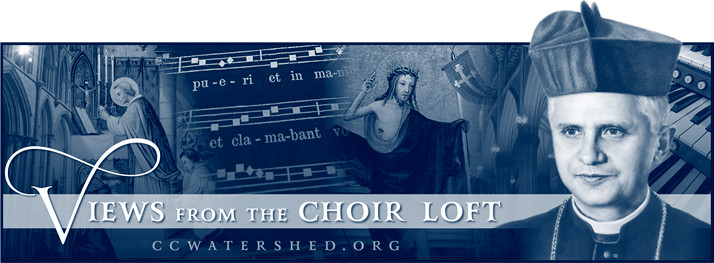
 HEN I AGREED TO WRITE FOR this blog, little did I know how much I would learn along the way!
HEN I AGREED TO WRITE FOR this blog, little did I know how much I would learn along the way!
I hadn’t heard of Oreste Ravanello until Jeff posted his Ave Maria. Turns out Ravanello wrote a whole book of three part motets. It looks like he composed about half of them and collected similar short pieces from other composers.
Browsing through in an optimistic sort of way, I found an Offertory Antiphon in three parts. I tried tapping out the notes on the piano. It looked promising. I tried getting someone to sing with me. That’s always a challenge! So I turned to my laptop to type it up so I could listen to the midi output.
* * Here is the PDF of Assumpta Est Maria by Oreste Ravanello for three voices (SSA) and here is the computer generated audio in MP3 for: all voices, top voice, middle voice and bottom voice.

The next part of the adventure came in response to Jeff’s Easiest Way to Teach Polyphony. He recommends annotating the score with solfege syllables and mastering those first before moving on to the real words.
I thought maybe there was a shortcut to annotating a score and found this repository of solfeged scores in Lilypond.
* * Here is the PDF of Assumpta est Maria with solfege syllables replacing the text.
It is not as handy as Jeff’s little red annotations as the solfege sheet and the lyrics are on separate versions, but being computer generated from something I already typed up is handy for the one preparing the score.
As a side note, it was interesting singing the solfege syllables – being more aware of where “do” is. I had a go with a piece I was more familiar with and was surprised how tricky it becomes when the key shifts (modulation?) and my ear was confused between the “do” on the page and the “do” which my ear had switched to. A related question is how to handle minor keys, whether to start the scale on “la” or “do”.
I have so much to learn!

